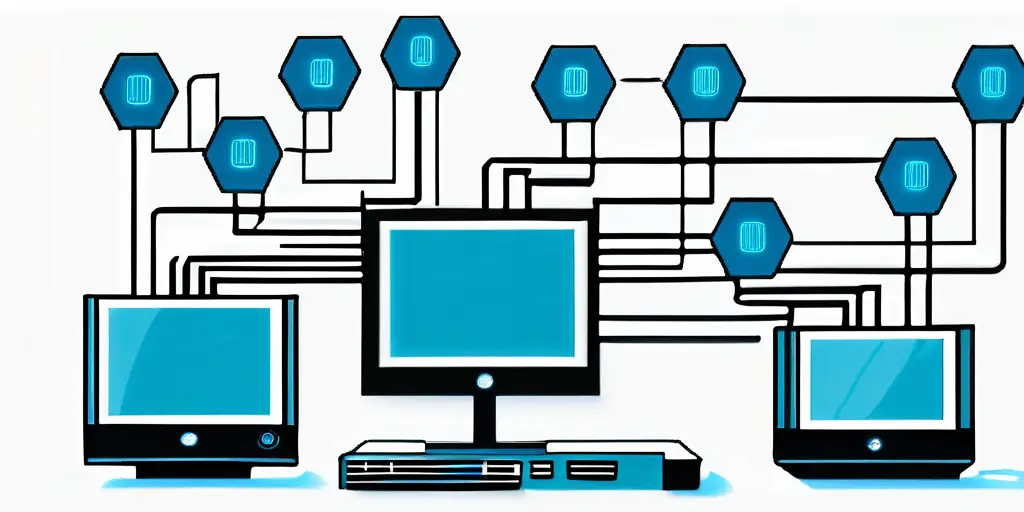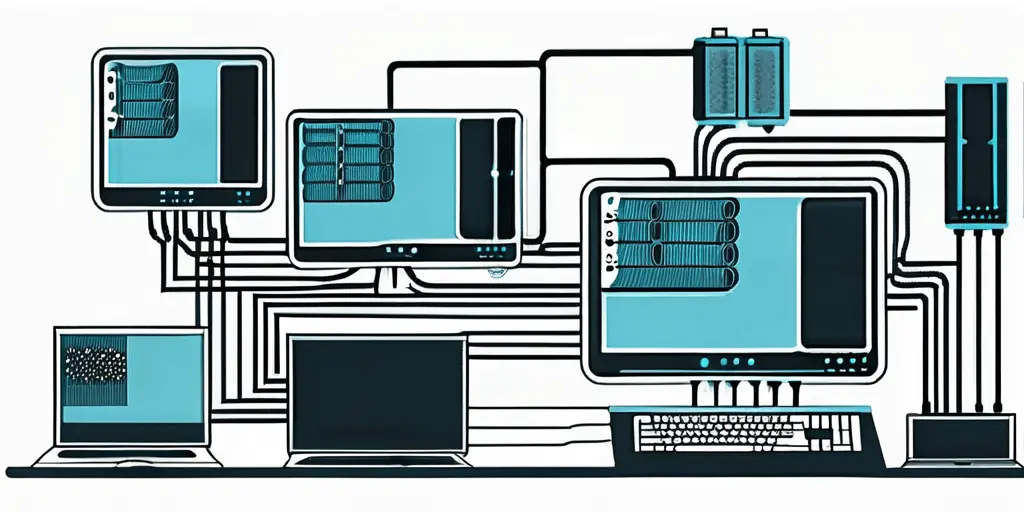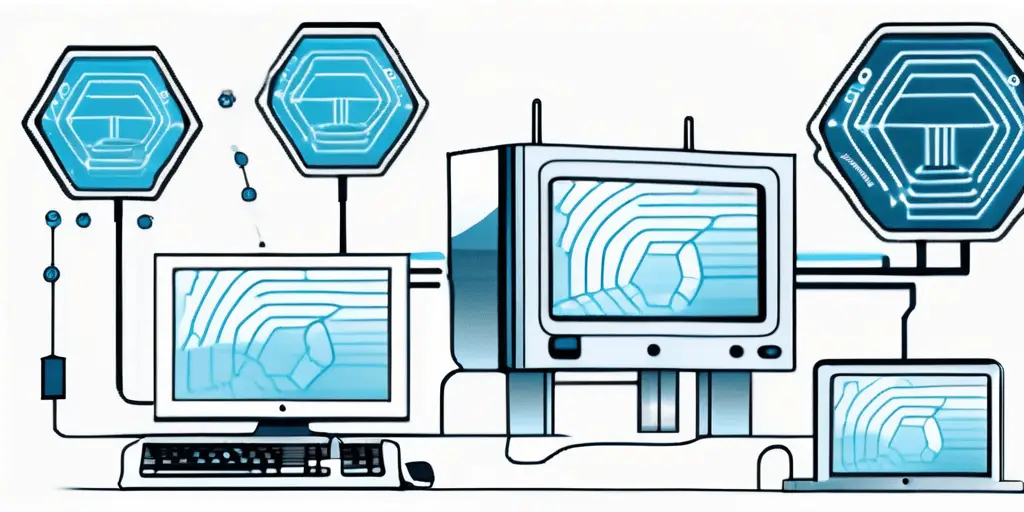In the world of networking and computing, MAC addresses play a vital role in identifying devices. These unique addresses are used to ensure data is sent to the correct destination. But have you ever wondered why MAC addresses are in hexadecimal? In this article, we will explore the reasons behind this interesting choice and uncover the significance of hexadecimal in the world of MAC addresses.
Understanding MAC Addresses
Before diving into why MAC addresses are in hexadecimal, let’s first establish what exactly these addresses are. A MAC address, short for Media Access Control address, is a unique identifier assigned to network interfaces. It is typically stored in the network adapter’s hardware and is used by the Data Link Layer of the OSI model to facilitate communication between devices on a network.
MAC addresses are essential for the functioning of networks, acting as the fingerprints of devices connected to them. They are crucial for identifying devices on a network and ensuring that data packets are delivered to the correct destination. Without MAC addresses, the network would not be able to differentiate between devices, leading to communication breakdowns and data being sent to the wrong recipients.
Definition of MAC Addresses
MAC addresses are made up of six groups of two hexadecimal digits, separated by colons or hyphens. For example, a sample MAC address could be “00:1A:2B:3C:4D:5E”. Each hexadecimal digit represents four bits, allowing for a total of 16 possible values (0-9, A-F) per digit.
The use of hexadecimal notation in MAC addresses is a practical choice due to its efficiency in representing binary data. Since computers operate in binary, with each bit having two possible states (0 or 1), hexadecimal simplifies the representation of MAC addresses by condensing four binary bits into a single character. This streamlines the MAC address structure and makes it easier for network administrators to manage and identify devices on a network.
Importance of MAC Addresses in Networking
MAC addresses play a critical role in networking as they ensure that data is sent to the intended recipient. When a device wants to communicate with another device on a network, it needs to know the MAC address of the recipient. By utilizing MAC addresses, networking devices can direct data packets to their intended destination.
Moreover, MAC addresses are fundamental for security purposes in networks. They are used in various security protocols to authenticate devices and control access to the network. By validating MAC addresses, network administrators can regulate which devices are allowed to connect to the network, enhancing overall network security and preventing unauthorized access.
The Hexadecimal System Explained
Now that we have a basic understanding of MAC addresses, let’s delve into the hexadecimal system and its relevance to computing.

The hexadecimal system, often referred to as base-16, is a fascinating number system that plays a crucial role in various aspects of computing. This system utilizes 16 different symbols to represent numbers, providing a versatile way to express numerical values. In addition to the standard numerical digits 0-9, hexadecimal incorporates the letters A-F, where each letter corresponds to a specific value (A = 10, B = 11, and so on). This incorporation of letters not only expands the number of symbols available but also allows for a more compact representation of data.
Basics of the Hexadecimal System
The hexadecimal system, also known as base-16, is a number system that uses 16 different digits to represent numbers. These digits include the numbers 0-9 and the letters A-F, where A represents 10, B represents 11, and so on. The use of letters allows for a more compact representation of numbers.
Furthermore, the hexadecimal system is widely utilized in various computing applications, such as memory addressing, color encoding, and character encoding. In memory addressing, hexadecimal numbers are commonly used to represent memory locations due to their concise nature and easy conversion to binary. Color encoding in graphics programming often employs hexadecimal notation to define colors, with each pair of hexadecimal digits representing the intensity of red, green, and blue components. Additionally, character encoding schemes like Unicode utilize hexadecimal values to represent a wide range of characters and symbols, enabling efficient data storage and processing.
Why Hexadecimal is Used in Computing
Hexadecimal is widely used in computing due to its close relationship with binary, which is the fundamental language of computers. Each hexadecimal digit corresponds to four binary digits, allowing for easier conversion between the two number systems. Additionally, hexadecimal numbers are more concise compared to their binary counterparts.
The Connection Between MAC Addresses and Hexadecimal
Now that we have a grasp of both MAC addresses and the hexadecimal system, let’s explore the connection between the two.
Structure of MAC Addresses
The structure of MAC addresses lends itself well to the hexadecimal system. With each of the six groups consisting of two hexadecimal digits, MAC addresses benefit from the concise representation that hexadecimal provides. This structure ensures that MAC addresses can be easily read and transmitted in a compact manner.
Moreover, the specific breakdown of a MAC address into octets, each represented by two hexadecimal digits, allows for efficient organization and identification within networks. This structured approach aids in the seamless routing of data packets and helps in the quick retrieval of device information when needed.
Role of Hexadecimal in MAC Addresses
By utilizing hexadecimal digits, MAC addresses can accommodate a larger number of unique combinations while still maintaining a manageable address format. With a total of 16 possible values per digit, MAC addresses can represent over 281 trillion unique addresses. The use of hexadecimal allows for efficient utilization of address space while keeping the address format compact.
Furthermore, the hexadecimal system’s compatibility with binary, the fundamental language of computers, makes it an ideal choice for representing MAC addresses. This compatibility simplifies the conversion process between binary and hexadecimal, facilitating seamless communication between devices on a network and enabling swift data transmission.
Benefits of Using Hexadecimal for MAC Addresses
The use of hexadecimal in MAC addresses brings several advantages to the table. Let’s explore these benefits further.
Efficiency and Compactness
Hexadecimal offers a more efficient and compact representation of MAC addresses compared to other number systems. By utilizing only two digits for each group, hexadecimal allows for shorter addresses, reducing the burden on network infrastructure and improving overall efficiency.
Furthermore, the compact nature of hexadecimal MAC addresses also plays a crucial role in conserving memory space within networking devices. With shorter addresses, devices can store and process MAC information more swiftly, contributing to enhanced performance and streamlined operations.
Error Detection and Correction
Another advantage of using hexadecimal in MAC addresses is its inherent error detection capabilities. Due to its structure, hexadecimal numbers are more resistant to errors caused by noise or interference. This helps to ensure the integrity of MAC addresses and reduces the chances of data corruption during transmission.
In addition to error detection, the use of hexadecimal simplifies error correction processes in MAC address handling. Network protocols and devices can leverage the properties of hexadecimal values to implement robust error correction mechanisms, further fortifying the reliability of MAC address communication across networks.
Common Misconceptions About MAC Addresses and Hexadecimal
Despite the numerous advantages and the inherent compatibility between MAC addresses and the hexadecimal system, there are some common misconceptions that deserve to be debunked.

Understanding MAC addresses and hexadecimal can be fascinating, especially when delving into the intricacies of how these two concepts intertwine to form the backbone of modern networking protocols. Exploring the unique structure of MAC addresses and the elegant simplicity of the hexadecimal system can provide valuable insights into the inner workings of digital communication.
Debunking Myths About MAC Addresses
One common myth is that MAC addresses can be used to track an individual’s precise location. While MAC addresses can provide information about the manufacturer and device type, they cannot pinpoint an individual’s exact whereabouts. MAC addresses are primarily used for network communication and are not designed for location tracking.
Furthermore, MAC addresses are essential for ensuring data packets reach their intended destinations within a network. By serving as unique identifiers for network interfaces, MAC addresses play a crucial role in facilitating efficient and secure communication between devices.
Clearing Up Confusion About Hexadecimal
Another misconception is that hexadecimal is a complex system that only experts can understand. In reality, hexadecimal is quite straightforward once you grasp the basics. With its intuitive representation and close ties to binary, hexadecimal is an accessible system that can be easily understood by anyone with a basic understanding of numbers.
Hexadecimal’s versatility extends beyond its use in MAC addresses to various other applications, including color representation in web design and memory addressing in computer systems. Embracing hexadecimal opens up a world of possibilities for expressing data in a concise and meaningful way, making it a valuable tool for both beginners and seasoned professionals in the digital realm.
Future of MAC Addresses and Hexadecimal
As technology continues to evolve, the future of MAC addresses and hexadecimal remains intriguing. Let’s take a peek into what lies ahead.

Potential Changes in MAC Address Formats
With the proliferation of Internet of Things (IoT) devices, there is a growing need for more unique MAC addresses. We may see changes in the MAC address format to accommodate a larger address space, ensuring that every device can be uniquely identified on a network.
One potential evolution in MAC address formats could involve the adoption of Extended Unique Identifiers (EUI), which would allow for even greater uniqueness in device identification. This shift could involve expanding the length of MAC addresses to accommodate the increasing number of IoT devices entering the market. By incorporating EUI into MAC address structures, networks can better handle the expanding array of connected devices while maintaining efficient communication protocols.
The Ongoing Relevance of Hexadecimal in Networking
Hexadecimal will continue to play a crucial role in networking due to its efficient representation of numbers and close relationship with binary. As networks expand and devices become more interconnected, the hexadecimal system will remain a fundamental part of network addressing.
Furthermore, the use of hexadecimal in MAC addresses offers a level of flexibility and scalability that is essential in modern networking environments. By leveraging hexadecimal notation, network administrators can easily manage and configure large-scale networks with precision and clarity. This versatility ensures that MAC addresses can be efficiently assigned and tracked, contributing to the seamless operation of complex network infrastructures.
Understanding the intricacies of MAC addresses and their hexadecimal format is just one piece of the complex cybersecurity puzzle. At Blue Goat Cyber, we recognize the importance of robust cybersecurity measures, especially in the realm of medical device security and compliance with standards like HIPAA and FDA. As a Veteran-Owned business, we’re committed to safeguarding your network against sophisticated threats. If you’re looking to fortify your cybersecurity posture with comprehensive penetration testing and compliance services, contact us today for cybersecurity help. Let us help you navigate the complexities of cybersecurity with our expert services.
